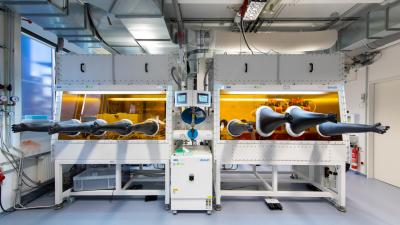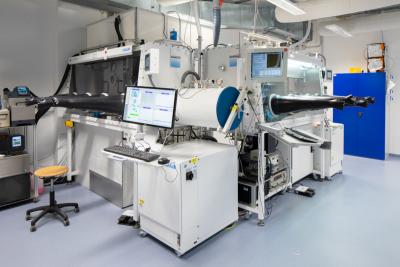The following post is a sponsored post by MBRAUN
Prof. Dr. Steve Albrecht and his 11-member team of the Helmholtz Innovation Lab HySPRINT at
Helmholtz-Zentrum Berlin (HZB) develop tandem solar cells that combine the advantages of silicon and perovskite solar cells. In order to create the best research conditions, Prof. Albrecht had installed systems from the market leaders, MBRAUN and CreaPhys (a part of MBRAUN).

HySPRINT Perovskite Lab © HZB / M. Setzpfandt
The Perovskite cluster is composed of 4 different parts: Precursor synthesis, wet coating with spin coater, evaporation of perovskites and metallization, scaling with inkjet printer and slot die coater under laminar flow. Every part of the cluster is integrated in inert gloveboxes under inert atmosphere to guarantee the best performance of the devices, as well as the best repeatability of the processes.
The Young Investigator Group recently succeeded in increasing the efficiency of perovskite silicon
tandem solar cells to 25.5 %. MBRAUN and CreaPhys are proud to be able to contribute a substantial part to the success with this customized equipment.

HySPRINT Perovskite Lab © HZB / M. Setzpfandt
Since the end of 2014, Prof. Dr. Steve Albrecht has further expanded the research field of perovskite solar cells at HZB with the HySPRINT Perovskite Laboratory. Today, 40 users work here, who produce and characterize perovskite layers for solar cells using various techniques and processes.

